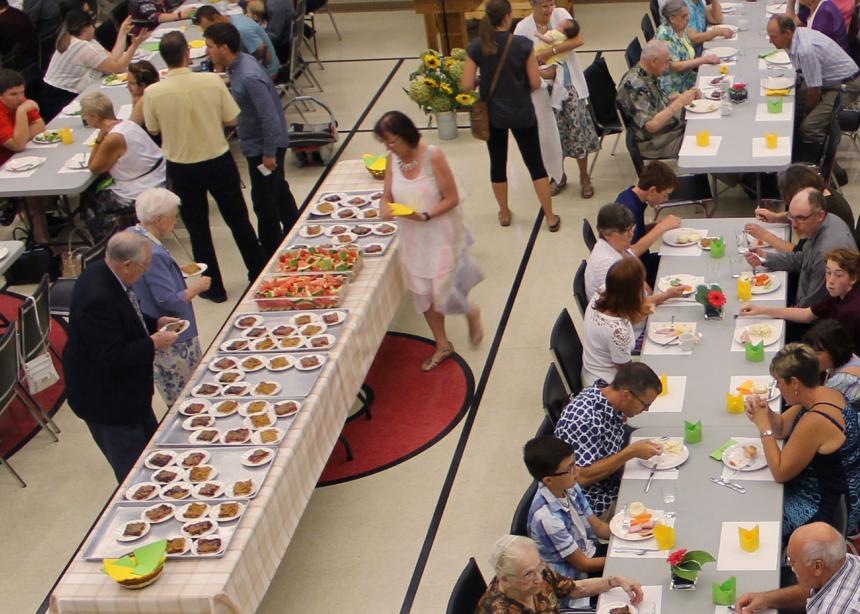Fred Redekop often reminded his congregation that preparing food for others who may be struggling with illness or a death in the family is a way of showing love and care.
So when it came time to say farewell to him after 25 years as our pastor, we wondered what food was appropriate for our farewell meal. Agreeing on a menu proved to be challenging, but after many conversations we finally decided to honour our out-going pastor with a faspa, a traditional “Russian” Mennonite Sunday meal.
When Fred arrived in our very traditional “Swiss” Mennonite community of Floradale, Ont., there was only one other “Russian” Mennonite in the congregation. Even Fred’s wife has deep Pennsylvania-Swiss roots. Over the years, Fred became accustomed to our way of doing things and graciously ate the food we served at potlucks. However, he never lost his nostalgia for the food of his childhood and adolescent years and sometimes reminisced about the smell of his mother’s baking.
Fortunately, the other “Russian” Mennonite in our midst knew what was appropriate for a proper faspa and we planned for cold cuts, salads and Jell-O, as well as the distinctive bread rolls known as zwieback. Using her mother’s recipe, a few volunteers each baked several dozen while our experienced caterers ordered the right amount of meat and made the Jell-O.
As we discussed dessert possibilities, I remembered that years earlier, when our women’s group was hosting a traditional “Russian” Mennonite meal, Fred’s mother made the journey from Niagara especially to teach us how to make platz. Her recipe had a thin layer of coffee cake covered with fruit and crumbs. After digging through my recipe drawer, I found the hand-written instructions, which I adapted to fit my cookie sheet. (See the recipe here.)
The village of Floradale has a bakery owned and operated by Old Order Mennonites, and they agreed to make several pans for the church’s farewell meal for the Redekops, if we provided the recipe.
It seemed bizarre to have horse-and-buggy Mennonites, who can probably trace all their lineages back to 17th-century Switzerland, making this traditional “Russian” Mennonite food, but at the same time it felt right to have different kinds of Mennonites working together. It was a way that the community could participate in saying farewell, and it showed that the differences between Swiss and Russian Mennonites are probably superficial.
Although my instructions to the bakery mentioned that authentic platz uses raw fruit with lots of crumbs, they followed my method and cooked the fruit before spreading it in the pan. I guess that makes it “Swiss Mennonite” platz.
We had a great farewell event for the Redekops. Perhaps they appreciated the zwieback more than the platz, but hopefully the whole family was able to get the message that we were trying to say “We love you” with food.
Barb Draper is Canadian Mennonite’s editorial assistant.



Add new comment
Canadian Mennonite invites comments and encourages constructive discussion about our content. Actual full names (first and last) are required. Comments are moderated and may be edited. They will not appear online until approved and will be posted during business hours. Some comments may be reproduced in print.